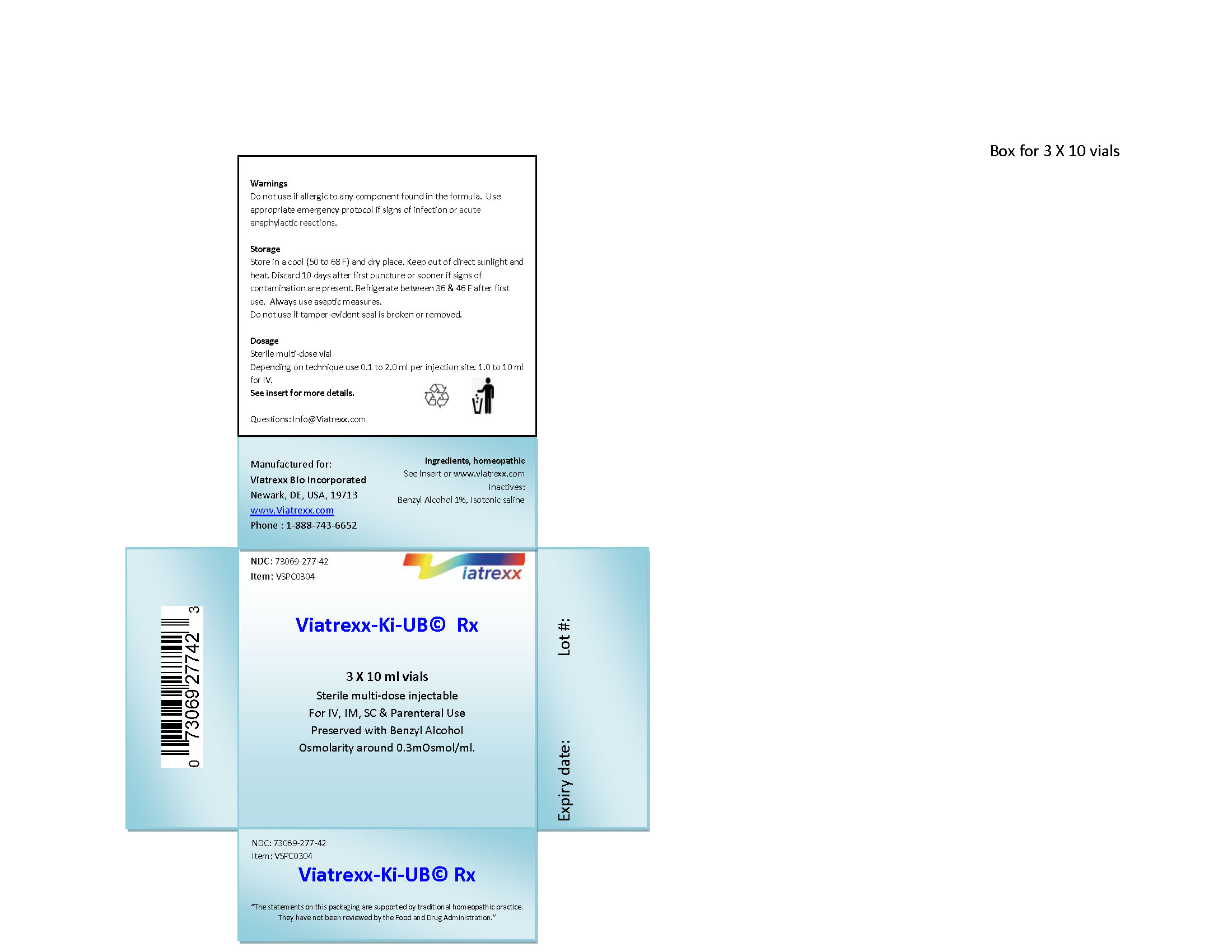Viatrexx-ki-ub while Breastfeeding

What is Viatrexx-ki-ub used for?
Is Viatrexx-ki-ub usage safe while breastfeeding? If a lactating mother is using it can there be any effect on growth or development of infant?
Nursing Mothers It is not known whether the benzyl alcohol or any of the ingredients is excreted in human milk. Caution should be exercised when products with benzyl alcohol are administered to nursing woman.
Viatrexx-ki-ub Breastfeeding Analsys
Nitric acid while Breastfeeding
SafeCAS Number: 7761-88-8
Avoid using it on the breast or cleanse thoroughly before nursing.
Berberis vulgaris root while Breastfeeding
DangerousCAS Number: 84649-92-3
Roots and bark are used. It contains Berberine that may be a cause of gastritis, nephritis, phototoxicity and severe jaundice by displacement of albumin -linked bilirubin: higher risk of kernicterus to newborns, which is greater in cases of 6-Glucose-PD deficiency. It is popularly widely used, however, its effectiveness has not been shown. Use not approved by the Commission E of German Ministry of Health. It should be avoided.
Potassium nitrate while Breastfeeding
Low RiskCAS Number: 14797-55-8
The amount of nitrates in breast milk is not related to level of contamination in drinking water (ingest <100 mg/day of nitrate do not produce milk with elevated nitrate levels). By this reason, breastfed babies from regions with nitrate contaminated water do not have increased risk of Metahemoglobinemia like bottle-fed babies do. The amount of nitrate compounds contained in vasodilator medication is so small that no problems have been reported while breastfeeding.
Solidago virgaurea flowering top while Breastfeeding
SafeCAS Number: 85117-06-2
Perennial plant. Florid summits are used.It contains flavonoids, tannins, saponosides.Indication after Commission E of German Ministry of Health: diuretic. Daily dose: 6 to 12 g of drug or equivalent. Be cautious with extracted alcohol and tincture.
Quinhydrone while Breastfeeding
Low RiskCAS Number: 123-31-9

Benzene derivative which is topically used with creams and solutions (2-4%) as a bleaching agent for several skin disorders associated to hyper-pigmentation. In industry it is used as photographic developer. TLV or threshold limit value which means maximum exposure limit for workers is 2 mg / m3 (Flickinger 1976). At latest update relevant published data were not found on excretion into breast milk. It is well absorbed through the skin, both when used as a therapeutic agent (Bucks 1998, Wester 1998, Westerhof 2005, Andersen 2010, Bozzo 2011) or industrial use (Barber 1995, McGregor 2007), however, a significant excretion into breastmilk is not likely for their lack of fat solubility. There is controversy and doubt about a possible mutagenic and carcinogenic effect (Kooyers 2004, FDA 2006, Levitt 2007, Andersen 2010), so it does not seem wise a chronic or continued use while breastfeeding. Do not apply it on the breast to prevent ingestion by the infant; otherwise, do it just after a meal and clean the nipple thoroughly with water before the next feed.Do not apply it over large areas or on long-term treatments to avoid an excessive systemic absorption.
Viatrexx-ki-ub Breastfeeding Analsys - 2
Quinhydrone while Breastfeeding
CAS Number: 123-31-9
Topical hydroquinone has not been studied during breastfeeding. Hydroquinone is not contraindicated during breastfeeding and if hydroquinone is required by the mother, it is not a reason to discontinue breastfeeding. However, some experts feel that long-term use of hydroquinone is difficult to justify in a nursing mother.[1] If hydroquinone is used, ensure that the infant's skin does not come into direct contact with the areas of maternal skin that have been treated and the infant does not ingest the product from the mother's skin.
Viatrexx-ki-ub Breastfeeding Analsys - 3
Beef kidney and Breastfeeding
SafeIf consumed moderately liver and various organ meats are compatible in breast feeding.
Pork kidney and Breastfeeding
SafeIf consumed moderately liver and various organ meats are compatible in breast feeding.

What should I do if already breastfed my kid after using Viatrexx-ki-ub?
Not much study has been done on safety of Viatrexx-ki-ub in breastfeeding and its ingredients. Even we do not have complete information about usage of Viatrexx-ki-ub in breastfeeding so at this point a trained medical professional could be your best bet. If you observe anything abnormal with your baby please contact 911.
I am nursing mother and my doctor has suggested me to use Viatrexx-ki-ub, is it safe?
If your doctor considers Viatrexx-ki-ub safe enough to prescribe for you that means its benefits should outweigh its known risks for you.
If I am using Viatrexx-ki-ub, will my baby need extra monitoring?
We are not Sure, Please check with your healthcare provider or doctor.
Who can I talk to if I have questions about usage of Viatrexx-ki-ub in breastfeeding?
US
National Womens Health and Breastfeeding Helpline: 800-994-9662 (TDD 888-220-5446) 9 a.m. and 6 p.m. ET, Monday through Friday
UK
National Breastfeeding Helpline: 0300-100-0212 9.30am to 9.30pm, daily
Association of Breastfeeding Mothers: 0300-330-5453
La Leche League: 0345-120-2918
The Breastfeeding Network supporter line in Bengali and Sylheti: 0300-456-2421
National Childbirth Trust (NCT): 0300-330-0700
Australia
National Breastfeeding Helpline: 1800-686-268 24 hours a day, 7 days a week
Canada
Telehealth Ontario for breastfeeding: 1-866-797-0000 24 hours a day, 7 days a week
